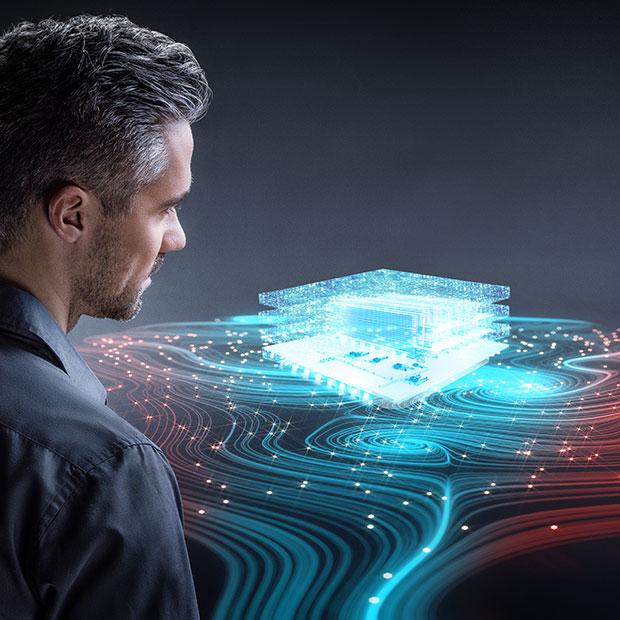At LogiMAT 2023, leading system integrator TGW Logistics will demonstrate its Future Fulfilment Center – how it works, how users can benefit from its advantages and what technology it uses. To promote the continuous development of this innovative ecosystem, the company invests heavily in technology, structures and its employees. Approximately 4.5 percent of TGW’s annual revenue is invested in research and development.
 There’s a fundamental difference between today’s warehouses and the Future Fulfilment Center. The centre of the future is not only highly automated, but it also operates proactively. This means that it fulfils tasks independently, optimises processes and is constantly learning. At the same time, it offers maximum flexibility and thus relieves the operator’s workload. For example, in the future, staff scheduling need not to be handled by employees, but can be carried out by intelligent software tools via data processing. These tools will also control performance in an energy-efficient and low-wear manner and will anticipate consumer behaviour.
There’s a fundamental difference between today’s warehouses and the Future Fulfilment Center. The centre of the future is not only highly automated, but it also operates proactively. This means that it fulfils tasks independently, optimises processes and is constantly learning. At the same time, it offers maximum flexibility and thus relieves the operator’s workload. For example, in the future, staff scheduling need not to be handled by employees, but can be carried out by intelligent software tools via data processing. These tools will also control performance in an energy-efficient and low-wear manner and will anticipate consumer behaviour.
Customer benefits, flexibility and profitability
TGW is constantly working to further develop the Future Fulfilment Center and its modules, which range from user-friendly software to intelligent mechatronics to a digital twin.
There are three central goals in this regard:
•Greater customer benefits: operating the system shall require significantly less time and effort, allowing customers to focus entirely on their core business.
•Greater flexibility: customers shall be in a position to increase their adaptability and react flexibly to changes in the market or in their business models.
•Greater profitability: system performance shall be adapted to the required availability, thus increasing profitability by minimising staffing, reducing wear and decreasing energy consumption.
It’s not just the geopolitical situation that is unpredictable: changes in economic sectors also complicate things. Faster delivery promises and rising service levels continue to drive these developments, while demographic change exacerbates the shortage of qualified personnel. “Anyone investing in a new intralogistics system is seeking flexibility, efficiency and fitness for the future – and collaboration with partners that they can trust 100 percent,” emphasises Harald Schröpf, CEO of the TGW Logistics Group.
Transparent, self-learning and self-healing
The credo is therefore: spotlight on customer benefits. Keywords like full data transparency, self-learning and self-recovery are hallmarks of TGW’s Future Fulfilment Center.
Initially, relevant data is gathered and used for a digital representation. The system learns through information analysis and uses real-time data for optimisations. It proactively corrects malfunctions and autonomously reports potential sources of error.
Focusing on sustainability
The fulfilment centre of the future is based not only on modern robotic technology that increases profitability and addresses the labour shortage, but also on the three pillars of sustainability. “Our basic principle is that each system must be planned and implemented in an ecologically, economically and socially acceptable manner,” insists Harald Schröpf. In order to fulfil this promise, TGW is constantly optimising its supply chain and developing more sustainable products.
In order to continue promoting the Future Fulfilment Center and improving the technology, TGW consistently invests in research and development. “We invest approximately 4.5 percent of our annual revenue, which is significantly more than many of our competitors,” according to CEO Harald Schröpf. “At the moment, there are over 750 specialists working in the areas of software and digitalisation at TGW.”
Come and discover the Future Fulfilment Center at TGW’s booth: Hall 5, booth C13





Comments are closed.